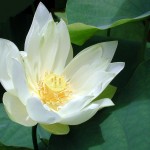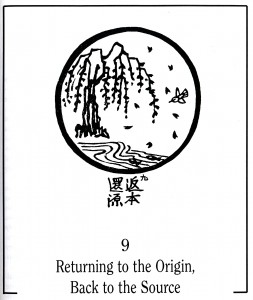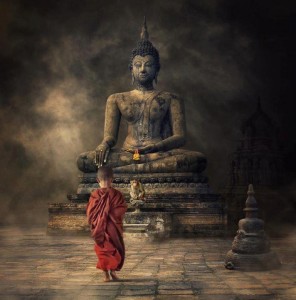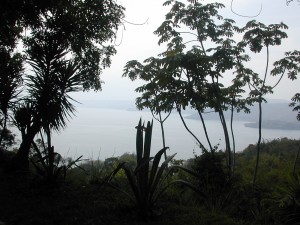 “Thirty spokes meet at the wheel’s axis;
“Thirty spokes meet at the wheel’s axis;
The center space makes the wheel useful.
Form clay into a cup;
The center space gives it purpose.
Frame doors and windows for a house;
The openings make the space useful.
Therefore, purpose comes from what is there
Because of what is not there.”
Tao Te Ching, 11
We spend our days in a fast-paced, demanding work environment, subject to chronic stress which can undermine our effectiveness, our relationships, and our health. When we’re stressed and anxious, we make reactive decisions that only increase the suffering within and around us.
But there is a better way. Research has confirmed a central Buddhist teaching, showing that contemplative practice relieves suffering. We become less anxious, defensive, and depressed by challenges, developing better cognitive and coping skills, greater compassion for ourselves and others (Walsh & Shapiro, 2006). As the Tao, reminds us, the center space brings greater purpose and peace.
 A few years ago, I included contemplative practice in my college course on vocation, hoping that a regular contemplative practice would help my students become more centered, less stressed, more able to listen to their hearts and discern their vocations.
A few years ago, I included contemplative practice in my college course on vocation, hoping that a regular contemplative practice would help my students become more centered, less stressed, more able to listen to their hearts and discern their vocations.
I introduced them to passage meditation, as taught by Sri Eknath Easwaran (Easwaran, 2008), which focuses on a spiritual passage or prayer. We began with the Prayer of St. Francis, “Lord, make me an instrument of thy peace. . . .” Sitting at their desks with their backs straight, the students closed their eyes and focused on the first line, one word at a time, for a few silent moments at the beginning of class. I encouraged them to memorize this passage or another of their choosing and spend fifteen to thirty minutes each day in meditation, slowly focusing on the words. Whenever their minds wandered off into worries, memories, and planning– which is completely normal–they were encouraged to gently return to the beginning of the passage: “Lord….make me …an instrument…of thy….peace.” Over and over again–this process of returning to center, to space, challenging as it seems, is the practice. Some days our minds are filled with distractions. Other times, we discover a brief oasis of peace.
Every day at the beginning of class, my students and I closed our eyes, and silently repeated our passage. Then I would silently send love to my students and conclude by saying, “Now when you’re ready, open your eyes, centered, refreshed, and at peace.” For the first few weeks, I didn’t know how the students felt about this meditation time, but I appreciated the time to center down before class.
Then one day on the way to class, a very distraught colleague insisted on telling me her problem, so I walked into class, ten minutes late. I paused at the doorway in surprise–my students were in their chairs, eyes closed in meditation. I entered and sat down for a few silent moments until the young woman who had been leading the meditation, said, “Now open your eyes, centered, refreshed and at peace.” I began that day’s class with joy and gratitude.
Now I include a few moments of meditation before each of my classes as we pause to give ourselves and one another the gift of peace.
If you’d like to try passage meditation for yourself:
- Close your eyes, sit with your spine straight, and focus on a passage.
- It can be simply the line “Lord….make me …an instrument…of thy….peace” or a prayer of your choice.
- Repeat the short passage silently and slowly to yourself, focusing on one word at a time, like a string of pearls in your mind.
- If your mind wanders—and it surely will—gently return to the beginning of the passage.
- Repeat the passage when you come to the end.
- At the end of your meditation period, smile and open your eyes, centered, refreshed, and at peace.
Namaste,
Diane
References
Easwaran, E. (2008). Passage meditation. Tomales, CA: Nilgiri Press. More information on passage meditation can be found on the Blue Mountain Center of Meditation web site: http://www.easwaran.org.
Walsh, R., & Shapiro, S. L. (2006). The meeting of meditative disciplines and western psychology: A mutually enriching dialogue. American Psychologist, 61, 227-239.













